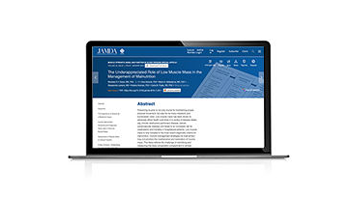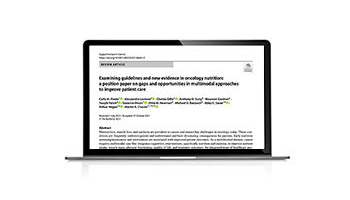The Underappreciated Role of Low Muscle Mass in the Management of Malnutrition
The Underappreciated Role of Low Muscle Mass in the Management of Malnutrition
- Main Image
-

- Tagname
- Article
- title
- The Underappreciated Role of Low Muscle Mass in the Management of Malnutrition
- Abstract
-
This opinion article, published in Journal of American Medical Directors Association (JAMDA), addresses the role of muscle mass in improving health outcomes in a variety of disease states. It also offers strategies you can use to help patients manage low muscle mass and prevent muscle loss.
- Content Reference
- /content/an/hcpproconnect/hk/en/home/adult/resources/public/The-Underappreciated-Role-of-Low-Muscle-Mass-in-the-Management-of-Malnutrition








Stay Connected